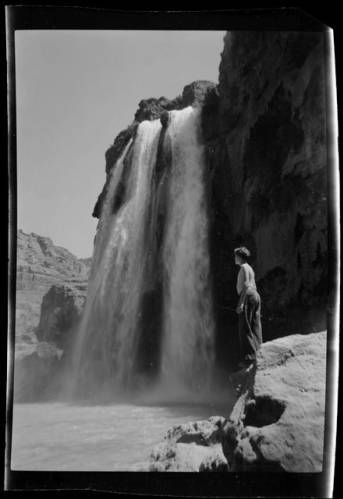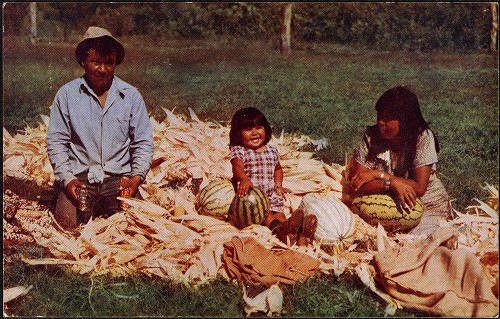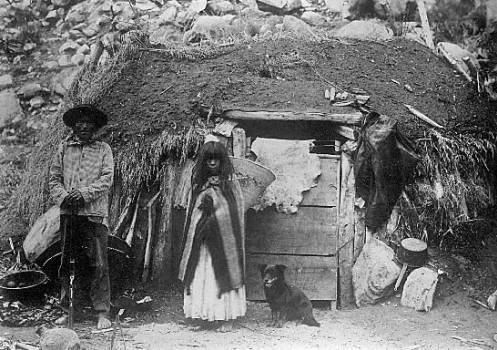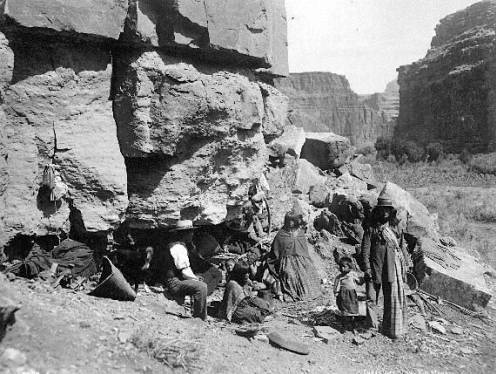Creation of the Havasupai Reservation and Grand Canyon National Park

The Havasupai of Northern Arizona had little interaction with Europeans until the late 19th century. As financial and conservation interest in the Grand Canyon grew, the Havasupai way of life was challenged by ranchers, tourists, and the federal government.
For centuries, Havasupai Indians lived in Havasu Canyon and on the surrounding plateau. They lived in the canyon during the spring and summer and farmed corn, beans, peaches, melons, and cotton. In the winter, Havasupais moved to the plateau, hunting and gathering food.
In 1848, following the Mexican-American War, Mexico ceded territory that included Arizona to the United States. With the arrival of the railroad and miners seeking precious metals in the Grand Canyon, white settlers flooded the area.
Havasupais adapted, dressing in European-style clothing which freed up buckskins for trade with white settlers. They bought manufactured home goods and weapons. However, outside their traditional trading networks, the value of their goods decreased as they were brought into a national market. This was simultaneously met with a decline in their resource base, due largely to American expansion on the plateau.
In 1882, President Arthur relegated Havasupais to the canyon, declaring the plateau public land. The Havasupai were consigned the smallest reservation in the United States at the time: only 518 acres. They initially accepted this, likely under the impression that they would still have access to the plateau. They had also heard about the forced marches of the Navajo and feared government removal, wanting to keep at least some of their traditional land. Soon, the plateau was full of cattle ranchers and tourists heading to the South Rim of the Grand Canyon. Havasupai Billy Burro remembered that the whites “would bar the Supais from the water holes, the grazing lands, all of that… homesteaders and cattle owners put in lines, saying that they are not to roam that country anymore.”
Following the creation of the Grand Cañon Forest Reserve in 1893, Havasupais participated in government attempts to farm their valley more intensely. This did not prove enough of a replacement for their typical seasonal cycle and they returned to the plateau, dodging rangers and sometimes conflicting with game wardens and cattle ranchers in order to collect enough food. In a deposition to the Indian Claims Commission, Havasupai Mary Wescogame declared, “The Havasupai people want to get back here to the country they thought belonged to them. They want to bring some horses here; the whites told them to get out, never to come back… They were driven out, but they kept coming back.” Men also turned to seasonal wage labor, working on ranches, in mines, or on the railroad.
Grand Canyon National Park was created in 1919, and the park boundaries completely surrounded the Havasupai Reservation. In the following decades, the Havasupai lobbied to have their lands returned to them, rejecting government offers to sell the lands back to them for market value. In 1975, Congress passed the Grand Canyon National Park Enlargement Act. Part of the act returned over 180,000 acres to the Havasupai, forming the current Havasupai Reservation.
Images



